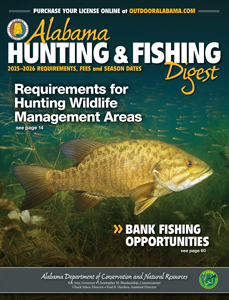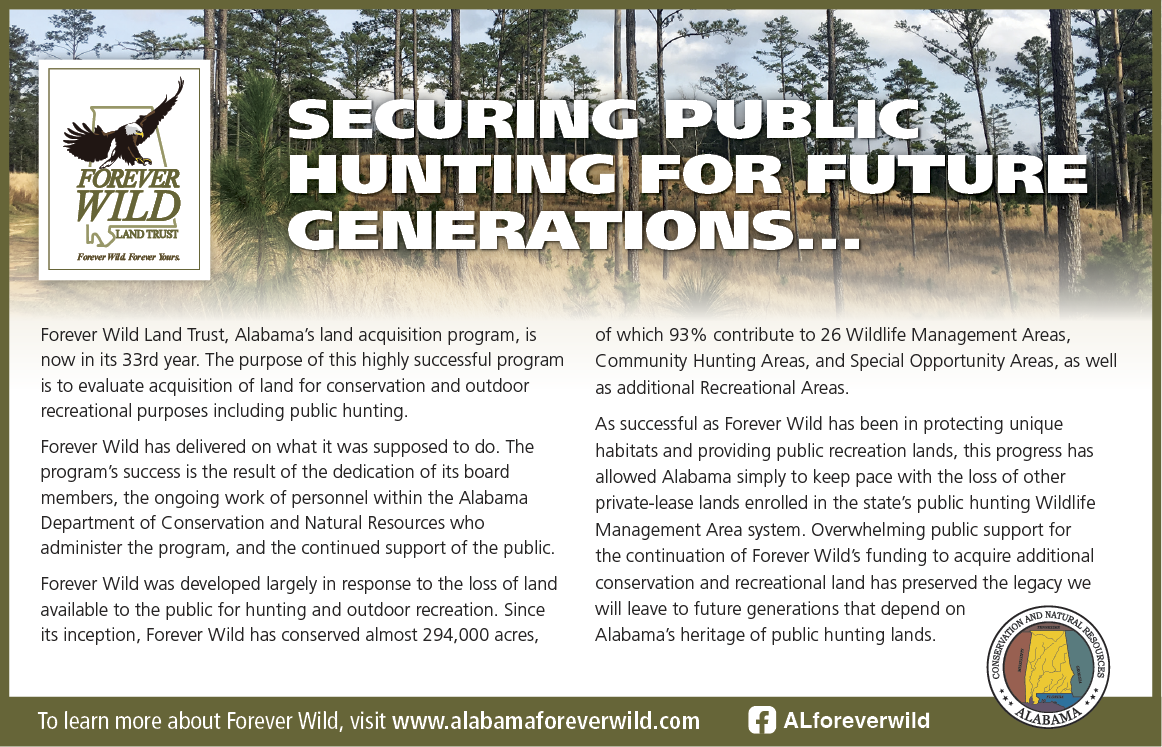Check Out (Also Check-in) Alabama's Wildlife Management Areas

The Alabama Division of Wildlife and Freshwater Fisheries (WFF) proudly manages 35 Wildlife Management Areas (WMA) across the state, consisting of almost 800,000 acres of high-quality habitat open to the public to pursue a wide array of game species. But before hunters take to the woods on any WMA, there are a few key requirements that need to be met. In general, to hunt on a WMA, hunters must obtain the applicable hunting license (all game, small game/wildlife heritage, duck stamps, HIP), a WMA license (for deer, turkey and waterfowl), an AREA permit, and a daily permit. Each WMA has unique rules and regulations depending on the species pursued, so please reference the AREA permits found online or speak with the WMA biologist about specific requirements before your hunt.
It is mandatory for all hunters to check in and out of a WMA at the beginning and end of their hunt. In an effort to make this easier for hunters, visits to the check stations to obtain a daily hunt permit are no longer required. As a convenient alternative, hunters can now utilize their smartphones, through the Outdoor Alabama app, to check in and out of the WMA. This option saves the hunter time by not requiring them to locate a kiosk at the beginning and end of each hunt and allows WMA biologists to see, in real time, how many hunters are on the property on any given day. For the tin foil hat crowd: the app does not track location of the hunter. As a traditional alternative, hunters can also use the paper AREA and daily permits that can be obtained from check stations or self-service kiosks at various locations on the WMA. When checking in using the paper permit, the hunter must fill out the “check-in” portion, tear it off, and deposit it in the return slot of the self-service box. While hunting, the remainder of the daily permit must be kept with the hunter at all times, filled out, and deposited back in any self-service box at the end of the day.
You may ask, “Why is it important to check in and out of a WMA during each hunt?” One goal of WFF is to be exceptional stewards of our state’s natural resources and to provide the highest quality hunting experience for the public. The data collected from hunters checking in and out of WMAs, as well as reporting any game species harvested, provides WFF biologists with the best available information to make sound decisions for setting WMA hunt dates and bag limits each year. For example, on Barbour County WMA, during the January 16–19, 2025 deer hunt, biologists can see there was a total of 1349 check-ins and 110 deer harvested during this period. That is almost a third of the total number of deer harvested on this WMA during the 2024–2025 hunting season. Our biologists use this data to evaluate hunter effort and success compared with the management goals for that particular year and make any necessary changes for the following year to maintain a healthy deer population while maximizing hunter opportunities.
Therefore, by taking the time to check in and out of a WMA, whether you’re using the paper permits or utilizing the app, you’re not only helping WFF biologists make important management decisions, but you’re also helping yourself and future generations by contributing valuable data. So, when visiting one of our many WMAs, we ask that you follow the necessary steps, check the rules for the WMA, and have a safe and successful hunt!


